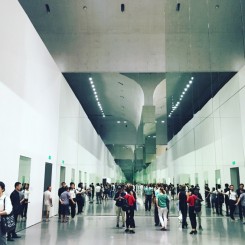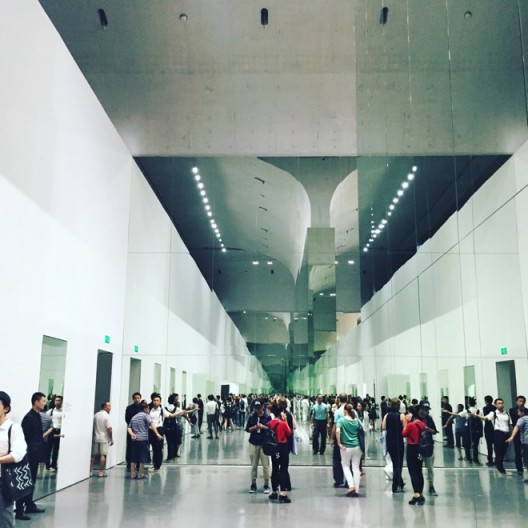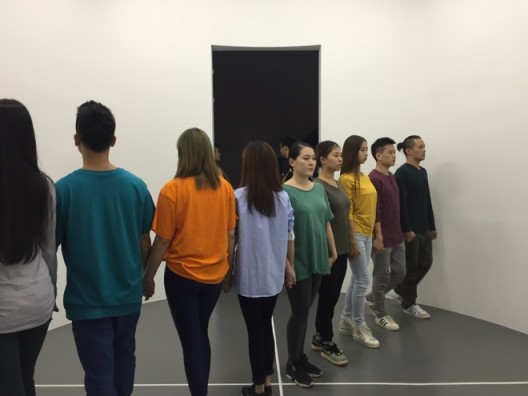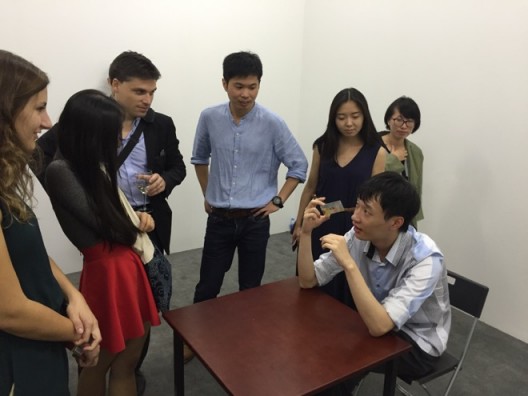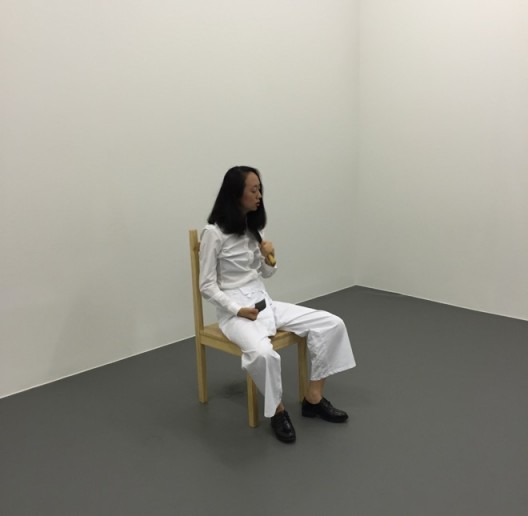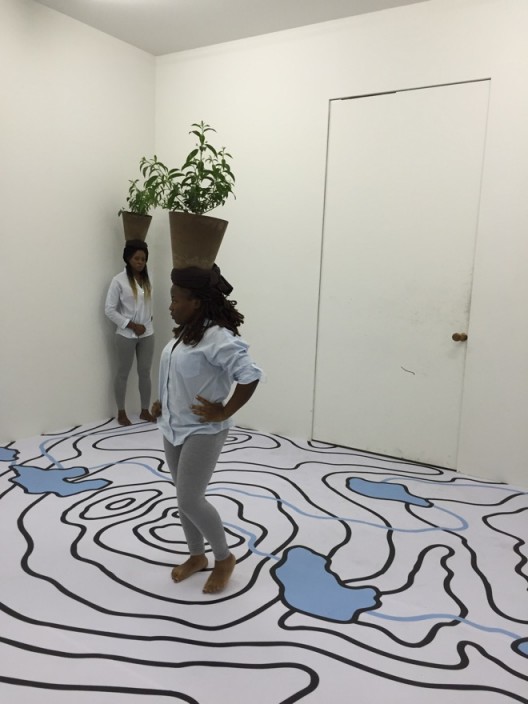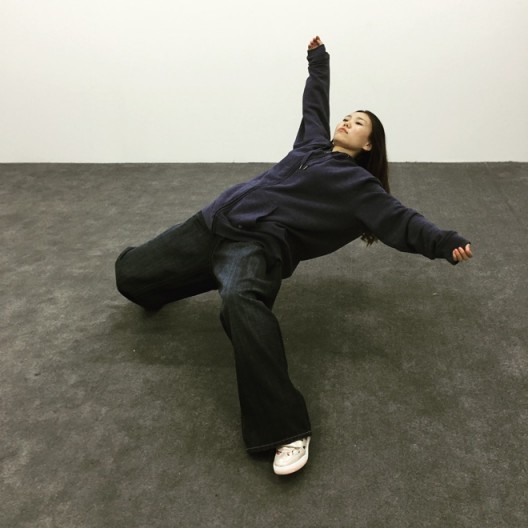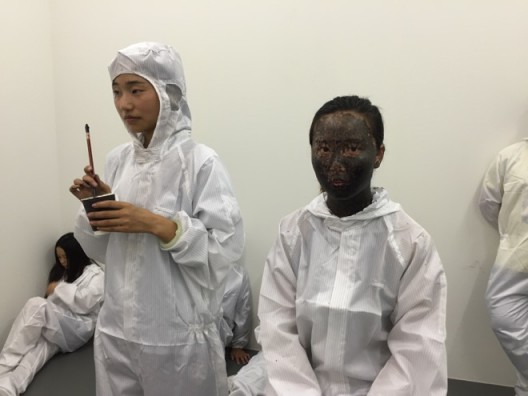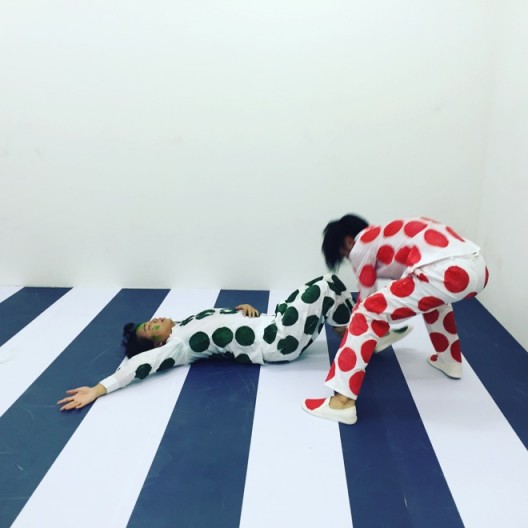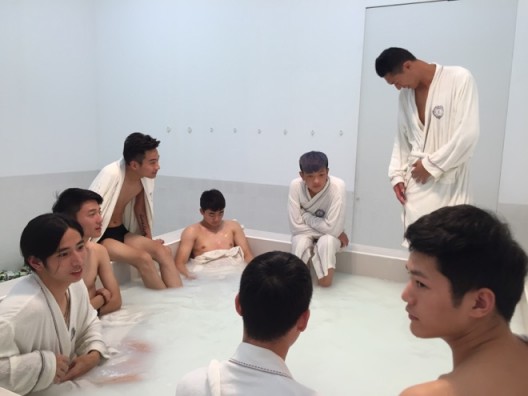Long Museum West Bund (No. 3398, Longteng Avenue, Binjiang, Xuhui District, Shanghai), Sept 9—Nov 7, 2015
“15 Rooms”—an exhibition of performance art curated by Hans Ulrich Obrist and Klaus Biesenbach—opened recently in Shanghai’s Long Museum West Bund. Now in its fifth and latest iteration, the exhibition’s basic premise is simple and deceptively attractive: 15 different works of performance art are presented tidily in 15 rooms and can be seen at any time during opening hours. The curators thus make mention of “living sculpture”.
The series of exhibitions began with “11 Rooms” at the Manchester International Festival in 2011, followed by “12 Rooms” at Museum Folkwang in 2012, “13 Rooms” in Sydney in 2013, and “14 Rooms” next to Art Basel last year. “Maybe in 2100, there can be 100 rooms,” Obrist deadpanned. Certainly, this exhibition in China will be the longest by far: over six weeks vs one to three weeks previously. Yet how can it even compare to Eugène Ionesco’s La Cantatrice Chauve, which has played at the Théâtre de la Huchette in Paris since 1957, and which gave Obrist the germ of the idea in the first place?
Of course, there is something pleasant about the exhibition. For the general public, hiding the works behind each door offers that frisson of suspense. In a certain way, it is a good introduction to performance art; after all, having 15 different works all in one place and during opening hours makes the show easy to fit into one’s schedule—say, between brunch and afternoon tea—and quite unlike sprawling exhibitions these days which some find too exhilarating and exhausting.
The mix of works—by artists of different ages and nationalities, and of different types—is quite compelling. Household names like Yoko Ono (“Touch Piece”, 1963) and Marina Abramović (“Art Must Be Beautiful, Artist Must Be Beautiful”, 1975) are present. Relational pieces like Roman Ondák’s “Swap” (2011)—where the performer convinces the audience to exchange one piece with the item on hand—and Tino Sehgal’s “This Is Exchange” (2002)—where visitors are asked to talk about market capitalism—generate that sense of participation, with varying degrees of credulousness. Of course, Allora & Calzadilla’s “Revolving Door” is the spectacular work, with the line of dancers moving and blocking the visitor’s way, their movements inspired by political protests, military marches, and chorus lines, making the most of the restrictions of the space.
The show also includes five Chinese artists. Xu Zhen’s “In Just a Blink of an Eye” (2005) never ceases to delight the crowds, with a performer frozen in mid-free-fall as if by magic. Cao Fei’s “Coming Soon” has a dark room with two girls on swings kicking drum-sets. Zhang Huan offers us a (rather weak) rehash of “Family Tree”, painting genealogy on faces (remember: the exhibition lasts six weeks). One can’t help but wonder, what if? What if a more visceral piece had been presented (like “12 Square Meters”, where in 1994 Zhang Huan, covered in honey, sat in an outhouse with flies)? But of course that is an impossibility in a museum, no thanks to all sorts of legal and hygiene regulations. (In fact, for “11 Rooms”, the curators had apparently wanted to re-enact a 1970 conceptual project by the American artist John Baldessari—a cadaver laid out “in the pose either of Mantegna’s ‘Dead Christ’ or the nude woman in Duchamp’s ‘Etant Données’”; they were defeated by medical ethics and the law).
At the opening, a random assortment of art world folks buzzed about. Besides the official 15 performances, there were a number of spectacles to be seen: the gallerists’ scrum which soon enveloped the top curators, whilst other curators cast watchful looks at top collectors and artists, and then there was the “participatory” element, the inevitable logjam created by viewers posing for selfies in front of the performances. Other things are easy to complain about: the inevitable avoidance of nudity (in China, but also in such a high-profile museum) or the booth-like rooms evocative of an art fair. Or the fact that artists not performing the works themselves—which also reminds one of the 1970s debate on whether representation of performance is possible or desirable (“Documentation has continued to be an issue that plagues live art, and ever since Peggy Phelan declared it a ‘betrayal’ of liveness, it has been much debated academically if documentation can ever be representational,” wrote Allan Taylor in Documentation of (Mis)Representation: Towards An Archival Future of the Performative Photograph). Or, as Hal Foster puts it, “Over the last decade art museums have re-staged many performances and dances, mostly from the 1960s and 1970s. Not quite live, not quite dead, these re-enactments have introduced a zombie time into these institutions.”
Certainly, the most visceral works can’t in any way be shown in such a setting—whether it be Zhang Huan (as mentioned above), or shooting bullets (as in Chris Burden or Tang Song/Xiao Lu), or bloody, painful acts (He Yunchang), or shock and horror (Zhu Yu’s “Eating Baby”), or Tang Dixin’s various (crazy) interventions. Nor would there be a point to these works in this setting, which instead privileges works that are continuous (remember the opening hours) and repetitive (the performers can work in shifts). In short, no pain, no nudity, no climax.
That said, many works are pleasurable, like seeing Bruce Nauman’s “Wall-Floor Positions” in person—and even some where the displacement was quite pertinent, like Hu Xiangqian’s “Two Men” (2008), which was first performed on a public street. Detached from its original context, the focus is on the formal movements of the red-dotted and green-dotted dancers—perhaps even fittingly, as the red and green of the traffic lights are further abstracted.
The world has come full circle from a conceptually driven departure from the strictures of gallery or institutional spaces to a certain recklessness of performance—and now, back into a spotless space. And though it provides a valuable opportunity for audiences to see these renowned works of performance, it is hard not to feel that the sheer convenience of “15 Rooms” has come at a cost. Yet the question lingers—what if?

